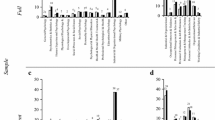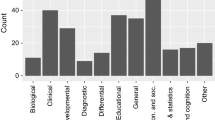Abstract
The paper presents the results of an examination of gender differences in scientific productivity on a sample of 840 respondents, half the young scientific population in Croatia. In the last decade gender differences in the scientific productivity of young researchers have increased, which may be the result of introducing a more competitive scientific system. Young female researchers publish an average of two scientific papers less than their male counterparts in five years, and their publications reach 70.6% of males" publication productivity in the same period. In the case of both sexes, about 15% researchers publish about half of all research papers, but even the most productive women publish less than their male counterparts Socio-demographic, educational and qualificational predictors contribute more or less equally to the number of scientific publications by women and men. It is not until we introduce structural variables that a strong sex differentiation appears because these factors are much more powerful in explaining the production of women. They show that female scientists" publication productivity is more strongly influenced by their position in the social organization of science. There are also considerable sex differences in the case of individual productivity predictors. International contacts determine the number of papers by female scientists most of all. Attendance at scientific conferences abroad is the most powerful predictor of male productivity, too, but reviewing colleagues" papers and academic degree are also very important.
Similar content being viewed by others
References
J. R. Cole, H. Zuckerman, The productivity puzzle: persistence and change in patterns of publication of men and women scientists. In: P. Maehr, M. W. Steinkamp (Eds), Advances in Motivation and Achievement, Volume 2, JAI Press, Greenwich, 1984, pp. 217–258.
S. Cole, Making Science: Between Nature and Society, Harvard University Press, Cambridge — London, 1992.
J. R. Cole, Women in science. In: D. N. Jackson and J. P. Rushton (Eds), Scientific Excellence: Origins and Assessment, Sage, Newbury Park — Beverly Hills — London — New Delhi, 1987, pp. 359–375.
R. Bruner, Women in engineering, Electronic News, 44 (1998) 23–24.
L. G. Humphreys, Women with doctorates in science and engineering. In: P. Maehr, M. W. Steinkamp (Eds), Advances in Motivation and Achievement, Volume 2, JAI Press, Greenwich,1984, pp. 197–216.
C. Holden, Women inch toward parity in science, Science, 283 (1999) 323.
A. Preston, Why have all the women gone? A study of exit of women from science and engineering professions, American Economic Review, 84 (1994) 1446–1459.
Women in science — Women and science, Women's International Network News, 24 (1998) 56.
K. PrpiĆ Žena u znanosti (Woman in science), Žena (Woman), 40 (1982) 53–67.
Unesco Statistical Yearbook, 1999, (Chapter III. Science and technology), Unesco — Bernan Press, Paris — Lanham, Md., 1999, pp. III/23–III/26.
Science and Engineering Indicators 1998. (Chapter 3, Science and Engineering Workforce), National Science Foundation (NSF), pp. 3/14–3/15: http://www.nsf.gov/sbe/srs/seind98/pdfstart.htm
H. Radtke, Women in science careers in the German Democratic Republic. In: V. Stolte–Heiskanen et al. (Eds), Women in Science: Token Women or Gender Equality, Berg Publishers, Oxford — New York, 1991, pp. 63–73.
M. BlagojeviĆ, Double–faced marginalisation. Women in science in Yugoslavia. In: V. Stolte–Heiskanen et al. (Eds), Women in Science: Token Women or Gender Equality, Berg Publishers, Oxford — New York, 1991, pp. 75–94.
N. Ananieva, Women in science in Bulgaria: The long hurdle–race. In: V. Stolte–Heiskanen et al. (Eds), Women in Science: Token Women or Gender Equality, Berg Publishers, Oxford — New York, 1991, pp. 95–117.
V. Koval, Soviet women in science. In: V. Stolte–Heiskanen et al. (Eds), Women in Science: Token Women or Gender Equality, Berg Publishers, Oxford — New York, 1991, pp. 119–133.
A. Haraszthy, Equal opportunities for women? Women in science in Hungary. In: V. Stolte–Heiskanen et al. (Eds), Women in Science: Token Women or Gender Equality, Berg Publishers, Oxford — New York, 1991, pp. 193–198.
J. R. Cole, S. Cole, Social Stratification in Science, The University of Chicago Press, Chicago & London, 1981 (1973).
H. Zuckerman, J. R. Cole, Women in American science, Minerva, 13 (1975) 82–102.
A. Bayer, H. Astin, Sex differentials in the academic reward system, Science, 188 (1975) 796–802.
T. Blackstone, O. Fulton, Sex discrimination among university teachers: A British — American comparison, The British Journal of Sociology, 26 (1975) 261–275.
T. Luukkonen–Gronow, V. Stolte–Heiskanen, Myths and realities of role incompatibility of women scientists, Acta Sociologica, 26 (1983) 267–280.
H. S. Astin, Academic scholarship and its rewards. In: P. Maehr, M. W. Steinkamp (Eds), Advances in Motivation and Achievement, Volume 2, JAI Press, Greenwich,1984, pp. 259–279.
K. PrpiĆ, Marginalne grupe u znanosti (Marginal Groups in Science), RZ RK SSOH — IDIS, Zagreb, 1989.
V. Stolte–Heiskanen, Handmaidens of the ‘knowledge class’. Women in science in Finland. In: V. Stolte–Heiskanen et al. (Eds), Women in Science:Token Women or Gender Equality, Berg Publishers, Oxford — New York, 1991, pp. 35–62.
J. S. Long, P. D. Allison, R. Mcginnis, Rank achievement in academic careers: Sex differences and the effects of productivity, American Sociological Review, 58 (1993) 703–722.
B. F. Reskin, Sex differences in status attainment in science: the case of postdoctoral fellowship, American Sociological Review, 41 (1976) 597–612.
F. Acar, Women in academic science careers in Turkey. In: V. Stolte–Heiskanen et al. (Eds), Women in Science: Token Women or Gender Equality, Berg Publishers, Oxford — New York, 1991, pp. 147–171.
S. Harding, E. Mcgregor, The gender dimension of science and technology, Women's International Network News, 22 (1996) 14–16.
F. Clemente, Early career determinants of research productivity, American Journal of Sociology, 79 (1973) 409–419.
B. F. Reskin, Scientific productivity, sex, and location in the institution of science, American Journal of Sociology, 83 (1978) 1235–1243.
J. S. Long, The origin of sex differences in science, Social Forces, 68 (1990) 1297–1315.
J. S. Long, Measures of sex differences in scientific productivity, Social Forces, 71 (1992) 159–178.
Y. Xie, K. A. Shauman, Sex differences in research productivity: new evidence about an old puzzle, American Sociological Review, 63 (1998) 847–870.
S. Kyvik, Motherhood and scientific productivity, Social Studies of Science, 20 (1990) 149–160.
T. Thagaard, Research environment, motivation and publication productivity, Science Studies, 4 (1991) 5–18.
K. PrpiĆ, Znanstvena produktivnost istra živa ča izmeđ u minimalizma i maksimalizma (Scientific productivity of researchers between minimalism and maximalism). In: K. PrpiĆ, B. Golub (Eds), Znanstvena produktivnost i potencijalni egzodus istraživa č a Hrvatske (Scientific Productivity and Potential Exodus of Croatian Researchers), Institut za društvena istraživanja Sveučilišta u Zagrebu, Zagreb, 1990, pp. 1–61; 107–127 (Appendix).
W. Lemoine, Productivity patterns of men and women scientists in Venezuela, Scientometrics, 24 (1992) 281–295.
W. Lemoine, The frequency distribution of research papers and patents according sex. The case of CSIR, India, Scientometrics, 24 (1992) 449–469.
B. M. Gupta, S. Kumar, B. S. Aggarwal, A comparison of productivity of male and female scientists of CSIR, Scientometrics, 45 (1999) 269–289.
S. Kyvik, M. Teigen, Child care, research collaboration, and gender differences in scientific productivity, Science, Technology & Human Values, 21 (1996) 54–71.
I. Hanson Frieze, B. Hartman Hanusa, Women scientists: overcoming barriers. In: P. Maehr, M. W. Steinkamp (Eds), Advances in Motivation and Achievement, Volume 2, JAI Press, Greenwich, 1984, pp. 139–163.
J. Nielsen, B. Elkjaer, Stubborness, drudgery, scientific interest and profound commitment. In: P. Maehr, M. W. Steinkamp (Eds), Advances in Motivation and Achievement, Volume 2, JAI Press, Greenwich, 1984, pp. 199–213.
P. D. Allison, J. A. Stewart, Productivity differences among scientists: Evidence for accumulative advantage, American Sociological Review, 39 (1974) 596–606.
P. D. Allison, Inequality and scientific productivity, Social Studies of Science, 10 (1980) 163–179.
K. PrpiĆ, The publication productivity of young scientists: An empirical study, Scientometrics, 49 (2000) 453–490.
V. Stolte–Heiskanen, N. Visart, C. Gainche, Comparison of patterns of research effectiveness and output and their stability across six countries. In: J. Farkas (Eds), Sociology of Science and Research, Akadémiai Kiadó, Budapest, 1979, pp. 289–329.
E. Mirskaya, Russian academic science today: Its societal standing and the situation within the scientific community, Social Studies of Science, 25 (1995) 705–725.
S. Kyvik, Productivity differences, fields of learning, and Lotka's law, Scientometrics, 15 (1989) 205–214.
O. H. ThorsteinsdÓttir, External research collaboration in two small science systems, Scientometrics, 49 (2000) 145–160.
K. Durkin, Social cognition and social context in the construction of sex differences. In: M. A. Baker (Ed.), Sex Differences in Human Performance, John Wiley & Sons, Chichester — New York — Brisbane — Toronto — Singapore, 1987: pp. 141–170.
Author information
Authors and Affiliations
Rights and permissions
About this article
Cite this article
Prpić, K. Gender and productivity differentials in science. Scientometrics 55, 27–58 (2002). https://doi.org/10.1023/A:1016046819457
Issue Date:
DOI: https://doi.org/10.1023/A:1016046819457




